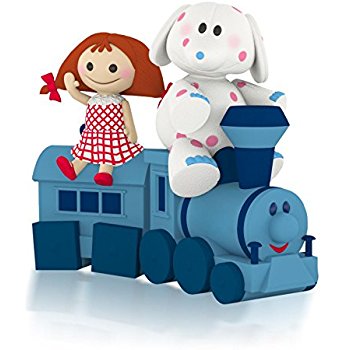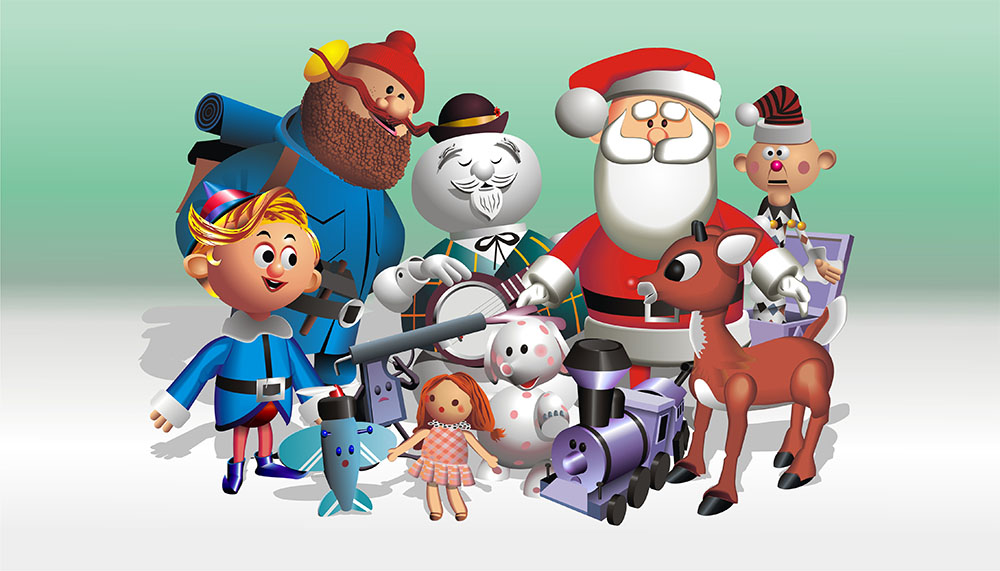Many think of innovation as a contemporary trend however when Robert Lewis May wrote Rudolph the Red Nosed Reindeer in 1939, he was an Innovator.
Before any Innovation process begins, you need a strategy that breaks down activities while focusing on delivering incremental, adjacent and transformational successes.
These three types of innovation—incremental, adjacent, and transformational—form a framework often referred to as the Innovation Ambition Matrix. Incremental (or core) innovations involve small, ongoing improvements to existing products or services. Adjacent innovations leverage what your organization already does well to enter new markets or reach new customers. Transformational innovations, on the other hand, are bold moves that create entirely new offerings, sometimes even spawning new markets.
Determining how much time, energy, and resources to devote to each type is key. For example, research published in the Harvard Business Review found that top-performing companies often allocate about 70% of their innovation resources to incremental improvements, 20% to adjacent opportunities, and 10% to transformational bets. While this 70-20-10 split is a helpful guideline, the optimal balance can vary depending on your industry, stage of development, and appetite for risk. Technology companies might put more into transformational projects, while established manufacturers may focus on steady, incremental gains.
Ultimately, the goal is to assess where you are now, understand your organization’s unique needs, and develop a tailored strategy that closes the gap between your current allocation and your ideal mix. This way, you’re not just innovating for innovation’s sake—you’re building a thoughtful roadmap to sustained success.
In Robert Lewis May’s story, there are many examples of this process. Robert Lewis May created characters in his stories that often display complex characteristics of these strategy elements.
Here are some examples we’ve found:
Understanding Types of Innovation: Core, Adjacent, and Transformational
To better appreciate the story’s lessons in innovation, it’s helpful to distinguish between the three main types: Core, Adjacent, and Transformational innovations.
- Core (Incremental) Innovations are the small, ongoing improvements we make to what already works well. Think of these as regular upgrades or fixes—like redesigning Santa’s sleigh runners each year for a smoother ride, or giving his team updated mittens for extra warmth. These changes might not make headlines, but they keep everything running efficiently and keep competitors at bay.
- Adjacent Innovations take what you already know or do and stretch it a bit further, reaching into new, but related, territory. For example, if the elves who build toys decide to start making decorations too, or Santa’s mailroom starts answering email from kids instead of just reading letters. These ideas build on existing strengths to explore new opportunities without taking a wild leap.
- Transformational (Breakthrough) Innovations are the big, bold moves—think jaw-dropping discoveries, brand-new business models, or inventions that change the game completely. This is akin to the year Santa first decided to fly with reindeer instead of relying on earthbound transportation (imagine the shock among the North Pole logistics team that year!). These innovations can create whole new markets or ways of working.
Understanding these three types of innovation helps clarify how organizations—or even magical holiday operations—balance improving the tried-and-true with taking the sorts of chances that might lead to something extraordinary.
The Innovation Ambition Matrix Explained
To truly understand the magic behind different kinds of innovation, it helps to look at the Innovation Ambition Matrix. Think of it as a handy map for organizing bold ideas into three broad categories: incremental, adjacent, and transformational.
- Core (Incremental) Innovations: These are the small, continuous improvements that keep things running smoothly. It’s the equivalent of giving an existing product a minor upgrade—just like Rudolph’s legendary nose turned a standard reindeer into something special.
- Adjacent Innovations: Here, organizations take what they already do best and stretch it into new but related areas. Imagine a toy company famous for wooden trains deciding to launch wooden planes; it’s not entirely new territory, but it’s a clever expansion.
- Transformational Innovations: These are the game-changers, the big swings that create entirely new products, services, or even industries. Think of when Apple launched the iPhone—suddenly, the world worked differently.
The Innovation Ambition Matrix helps teams allocate resources and shape their strategies across these three zones, ensuring a healthy mix of steady progress, smart exploration, and bold leaps.

Incremental innovation:
Incremental innovation involves a series of small improvements or upgrades resulting in improved product/service, increased productivity and competitive differentiation.
Rudolph himself is an Incremental Innovation. He is a reindeer like every other reindeer except for his nose! A bright red nose that would shine through fog like a spotlight. His nose resulted in improved product – instead of flying blind, they now had a light, which increased productivity – Santa would have been grounded that Christmas Eve without him.
Adjacent Innovation:
Adjacent Innovation finds new ways to leverage a company’s expertise or existing product/service into new markets or creating new products for existing markets.
The Island of Misfits contained many Adjacent Innovations. Some that worked – a water pistol that squirts jelly, and some that didn’t – a train with square wheels on his caboose. The successes offered expansion into new markets as well as creating new products for existing markets. The fails proved to offer lessons.
The process behind these innovations wasn’t always straightforward. Like any good idea, it can be tempting to fall in love with a concept and push it forward, even when it doesn’t quite fit or isn’t fully formed. Sometimes, teams are so convinced they’re onto something big that they rush the process, only realizing too late that perhaps they’ve followed the wrong track—much like defending a train with square wheels instead of stopping to ask if it will ever leave the station. The important takeaway is that adjacent innovation thrives on both wins and misses. Each effort—whether a jelly-squirting water pistol or a less-than-functional toy—provides valuable insights that help refine the next idea. No matter the outcome, time spent evaluating, learning, and (if necessary) admitting when something isn’t working is what drives meaningful progress.


Transformational Innovation:
Transformational Innovation is disruptive in nature because it often creates a new industry or completely transforms the way we live and work, often requiring new capabilities and distribution to serve new markets and new customers.
Hermey the Elf was a Transformational Innovation. An Elf who didn’t want to be an Elf but instead wanted to be a dentist. His decision was disruptive in nature and completely transformed the way they lived at the North Pole…that is definitely transformational.
Finding and Reaching Your Ideal Innovation Mix
So, how does a company actually determine the right balance between incremental, adjacent, and transformational innovation? It’s not as simple as pulling numbers out of a stocking or copying what your neighbor does. Rather, finding your innovation sweet spot is a bit like assembling Santa’s sleigh team—each reindeer (or type of innovation) needs to pull its weight, depending on your unique journey.
Start With Your Current Innovation Landscape
Begin by assessing where your innovation efforts are focused right now. Are you mostly tinkering with tried-and-true products (incremental), or are you also exploring wild new ideas that could light up the night like Rudolph’s nose (transformational)? Understanding your present allocation is key.
Align With Your Business Strategy and Industry
Not every business needs the same sleigh configuration. For example:
- Technology firms often invest more heavily in transformational innovations to stay ahead in fast-moving markets.
- More mature industries may focus on perfecting what already works via incremental innovations.
- If you’re the underdog trying to leapfrog competitors, you might want to funnel more resources toward riskier, transformational plays.
Learn From What Works
Industry studies—like the oft-cited Harvard Business Review’s research—suggest that a 70-20-10 split (incremental, adjacent, transformational) is typical for high-performing companies. But think of that as a starting recommendation, not a magic formula.
Factor in Innovation Maturity
Like Hermey the Elf charting his own course, your organization’s stage of innovation maturity matters. Younger companies might experiment more, while established ones optimize core offerings. Be honest about where you are on your journey; that self-awareness will guide your resource allocation.
Close the Gap
Once you’ve mapped your current allocation and set your innovation ambitions, it’s time for the real magic: bridging the gap. This means:
- Setting clear resource targets for each type of innovation.
- Tracking progress (Santa checks his list twice, after all).
- Adjusting as you learn what delivers the most festive results.
Besides creating a strategy that’s in line with your industry and level of innovation maturity, it is equally important to stay connected in the innovation space. Ezassi is often tasked with helping our clients find incremental, adjacent and transformational success. Our proprietary approach to search and attract targeted groups of individuals is defining the way companies accelerate innovation.
From in-depth technology scouting projects to [innovati…
Besides creating a strategy that’s in line with your industry and level of innovation maturity, it is equally important to stay connected in the innovation space. Ezassi is often tasked with helping our clients find incremental, adjacent and transformational success. Our proprietary approach to search and attract targeted groups of individuals is defining the way companies accelerate innovation.
From in-depth technology scouting projects to innovation challenges, Ezassi has the resources to help our clients meet consumer needs and drive long-term value for their organization.
What Influences Your Innovation Mix?
So, what determines how much to invest in incremental, adjacent, or transformational innovation? There’s no one-size-fits-all formula. Several factors steer these decisions:
- Industry dynamics: Tech giants like Google or Apple might pour more resources into bold, transformational bets, while traditional industries—think Ford or General Mills—tend to focus on gradual improvements and adjacent opportunities.
- Competitive position: If your company is trailing the pack, you may need to take bigger chances with transformational projects. On the other hand, if you’re leading your market, doubling down on proven incremental changes may be the safer path.
- Company maturity: Startups or fast-growing disruptors often channel energy into game-changing ideas, while established corporations—those with tried-and-true products—typically concentrate on extending their core strengths and exploring adjacent spaces.
Ultimately, shaping the right allocation is all about balancing risk, potential reward, and where your organization stands in its journey.
Fostering Innovation Through a Team-Based, Entrepreneurial Spirit
Collaborative, entrepreneurial thinking is at the heart of successful innovation strategies. By encouraging teams to embrace an entrepreneurial mindset, organizations unlock a whole new layer of creative potential. When everyone is empowered to contribute ideas—and is held accountable for championing them through to execution—new possibilities emerge that might otherwise be overlooked in traditional, top-down environments.
Taking a page from the Harvard Business Review’s discussion of the Innovation Ambition Matrix, adopting a team-based approach means you’re not just relying on a single innovator or leader to push change. Instead, you’re cultivating a culture where every member looks beyond current norms, seeking both incremental improvements and transformational opportunities. This collective accountability fuels momentum and widens the scope for adjacent and breakthrough innovations, ensuring that the organization can adapt rapidly to meet shifting market needs—whether that’s launching a product that subtly enhances an existing service, or creating entirely new pathways in your industry.
Ultimately, innovation thrives where curiosity, risk-taking, and teamwork intersect. By bringing these ingredients together, companies can continually redefine their strengths and position themselves to lead—rather than follow—emerging trends.
So, where should organizations focus their innovation efforts? According to research published in the Harvard Business Review, top-performing companies tend to follow a resource allocation mix of approximately 70% on core (incremental) innovation, 20% on adjacent innovation, and 10% on transformational innovation.
Of course, this isn’t a one-size-fits-all formula. Each company’s sweet spot depends on factors like industry, competitive landscape, and stage of growth. For example:
- Technology firms may lean more heavily into transformational innovation to stay ahead.
- Established manufacturers might invest more in incremental improvements to protect their core business.
- Companies looking to catch up may allocate more resources to bold, transformational shifts in hopes of leaping ahead.
The key is for organizations to honestly assess where they currently invest their innovation energy, determine the ideal mix for their unique position, and then close the gap between the two.






